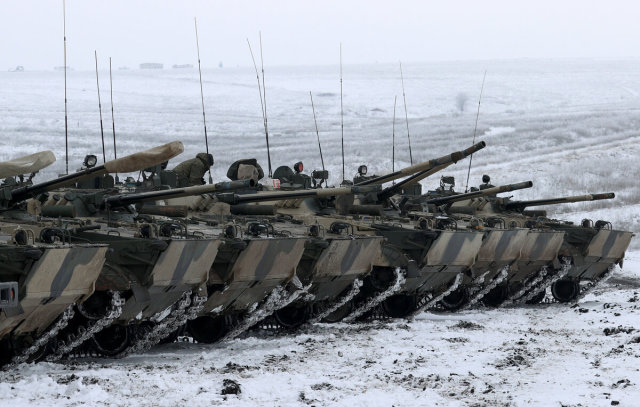Russian troops have received another batch of infantry fighting vehicles — BMP-3, which will be completed in 2023. About the history of the "Queen of infantry" and its modern models — in the material of TASS
This year's final batch of BMP-3 was delivered by Kurganmashzavod (part of the Rostec State Corporation's High-Precision Complexes holding) as part of state contracts for the current year. Armored vehicles have been modified based on the experience of use in a special military operation. According to Igor Giske, the company's executive director, the manufacturer, with the support of Rostec, is modernizing production facilities, as well as recruiting additional employees. After the shipment of the contracted BMP-3s, the company will continue to produce combat vehicles in accordance with additional obligations.
BMP-1: the ancestor of the class
Experiments with the creation of a protected vehicle for transporting infantry began more than a century ago, but the armored tracked vehicles of that time were too slow. During the Second World War, semi-tracked armored personnel carriers became widespread, although they also had many disadvantages: a high silhouette, lack of protection from above, and the difficulty of landing troops.
An expert in the field of armored vehicles, Candidate of military Sciences, reserve Colonel Sergei Suvorov in the book "Infantry fighting vehicles BMP-1, BMP-2 and BMP-3" notes that the idea of infantry transport gained new life together with the change in the concept of warfare in the 1950s and 1960s - they assumed the widespread use of tactical nuclear weapons, which significantly increased the pace of offensive operations. The personnel had to keep up with the tanks and fire from the comfort of vehicles that protected them not only from bullets and shell fragments, but also weapons of mass destruction.
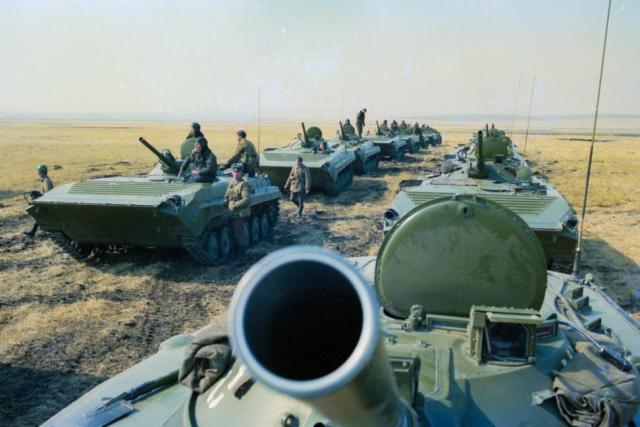 |
| Infantry fighting vehicles BMP-1. |
| Source: Grigory Kalachyan/ TASS |
Therefore, the Main Armored Directorate formed in the mid-1950s both the requirement for a new medium tank and the need to create a new combat vehicle on which motorized rifle units would operate in conjunction with tanks. A competition was announced, in which several design bureaus and research institutes took part. As a result, one of the projects developed at the Chelyabinsk Tractor Plant under the leadership of Pavel Isakov won. Initially, it was called "object 765", but in 1966 it will be adopted as an IFV (the BMP-1 machine will receive the name later, when its second generation is released). Kurgan Machine-Building Plant was chosen as the main site for the deployment of large-scale production of a new product.
The combat weight of the tracked vehicle was 13 tons, the armor protected from hitting 20mm shells into the frontal projection, bullets of all types of small arms and shell fragments into the rest of the hull. The crew consisted of three people. In the rear there was an amphibious squad for eight motorized infantry. The BMP-1 could accelerate to 65 km/h on the highway and swim at a speed of 7 km/h.
"At the dawn of my lieutenant's youth, there was a story among the military that allegedly the BMP-1 was developed by a woman," says Sergey Suvorov in his book. "It seems like she was designing some kind of all—terrain vehicle for Siberian oilmen and geologists, this project became known to the military and it (along with the designer) was taken under the IFV." The expert adds that the authenticity of the legend was given by the unusual elegant shapes of the new car — many believed that only a representative of the fair sex could create such a beautiful squat silhouette. In an interview with TASS, Suvorov shared his opinion that female designers who really contributed to the creation of an armored vehicle could work under the leadership of Isakov.
The "main caliber" of the infantry fighting vehicle was the 73 mm smoothbore 2A28 "Thunder" cannon, which could fire shots with a cumulative warhead (later fragmentation shells appeared). Manual loading was facilitated by a mechanized conveyor, which made it possible to achieve a rate of fire of 8 rounds per minute. A 7.62 mm machine gun was paired with the cannon. To combat enemy armored vehicles, the 9K14 Malyutka anti-tank complex was used with a guided missile, the launcher of which was located above the gun. The "baby" pierced 400 mm of homogeneous armor, reliably hitting any tank of that time at a distance of up to 3 km.
Suvorov noted that the layout of the new armored vehicle has become a classic for designers of all countries, and the BMP-1 was the ancestor of a new class of combat vehicles worldwide. The first such machines will appear in NATO countries only a decade later.
BMP-2 and BMP-3: more and more powerful
Even during the adoption of the BMP-1, views on the prospects of the armored vehicle changed. Both the Soviet Union and NATO countries began to move away from the concept of widespread use of nuclear weapons during hypothetical conflicts, so the infantry fighting vehicle needed new capabilities.
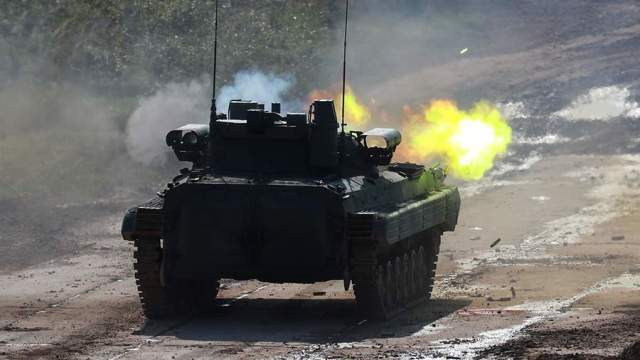 |
| BMP-2M. |
| Source: Photo: TASS/Sergey Fadeichev |
In the early 1970s, a competition was announced for the modernization of the BMP-1. The theme received the code "Boxing". The main difference between the updated BMP-2 was the 30 mm automatic rifled 2A42 cannon with selective feeding: it can fire both armor-piercing ammunition and high-explosive fragmentation shells, which are more effective against infantry. The cannon is capable of raising the barrel at an angle of up to 75 degrees, which allows it to hit targets in mountainous areas, in urban conditions (the BMP-1 cannon rose only 30 degrees). In addition, the 2A42 was stabilized in two planes (for the first time in the world on machines of this type) and could successfully hit targets while the machine was moving. The BMP-2 also acquired a new generation anti-tank missile system, and the commander's workplace was moved to an enlarged tower, where he received improved visibility and the ability to fire a cannon. The car turned out to be heavier than the previous one, so to increase its buoyancy, foam-filled float wings were added on the sides.
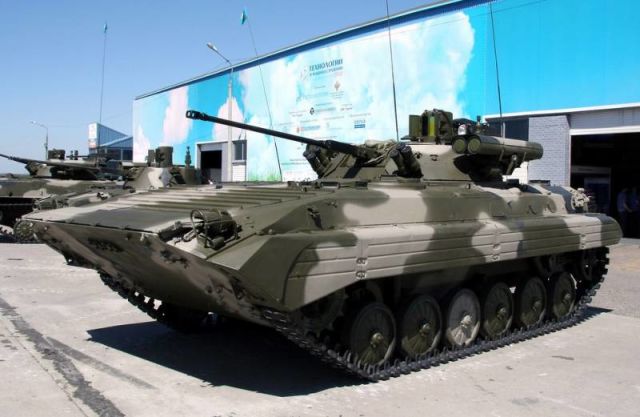 |
| BMP-2M with the Berezhok weapon system. |
| Source: https://www.vitalykuzmin.net |
During the work with the Berezhok cipher on the modernization of the BMP-2, the machine received an improved fire control system, an enhanced weapons system. The 30-millimeter cannon of the unified combat module is complemented by a 30-millimeter automatic grenade launcher and four launchers of the modern Kornet anti-tank missile system.
In 1987, a third—generation infantry fighting vehicle, the BMP-3, was adopted. It was developed by a Special Engineering Design Bureau under the leadership of chief designer Alexander Blagonravov as a result of experimental design work under the code "Fable". The novelty received two guns at once: a 100-millimeter cannon capable of firing both high-explosive shells and a guided missile, and an automatic cannon with a caliber of 30 mm. There are also three 7.62 mm machine guns. The firepower of the BMP-3 is still higher today than that of any foreign analogues. The body and turret of the vehicle are made of aluminum armor, protecting it from 30 mm shells in the frontal projection and 12.7 mm bullets in the remaining sections.
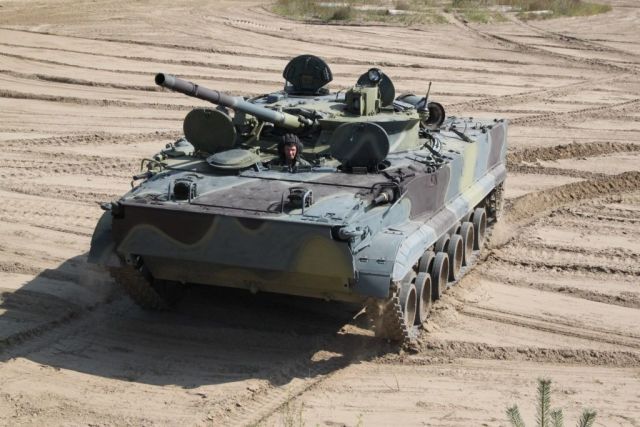 |
| BMP-3F. |
| Source: Kurganmashzavod |
In the early 1990s, the BMP-3 became interested in the Ministry of Defense of the United Arab Emirates. After negotiations, four samples of armored vehicles were prepared as soon as possible to participate in comparative tests. Their rivals were the American Bradley BMP and the British Warrior. After running through the desert in a sandstorm, the high driving qualities of domestic cars were confirmed. This was followed by shooting, the results of which finally convinced the UAE military leadership of the superiority of the BMP-3 over its competitors. In 1992, the first BMP-3 with some modifications began to arrive to the customer. Today they are the main infantry fighting vehicles of the Armed Forces of the Emirates, their fleet consists of about 1 thousand units. In the UAE army, the BMP-3 is considered the most reliable combat vehicle.
A combat veteran
"Our infantry fighting vehicles have proven themselves well in almost all conflicts in which they took part," Sergei Suvorov told TASS. — Based on the experience of their application <...> they were improving."
The first large-scale use of the BMP-1 took place in the Arab-Israeli conflicts of 1973 and 1982. There, the car showed its advantages, which were not fully revealed by the weak knowledge of the match between the crews. The most widespread use of first-generation machines occurred during the war in Afghanistan. There, insufficient booking of the BMP-1 and a small angle of elevation of the gun barrel were revealed, which was taken into account when designing the BMP-2. "In general, most of the combat losses of the BMP-1 in all combat episodes, without exception, are primarily due to their illiterate use," Suvorov notes in his book.
Second-generation vehicles began arriving in Afghanistan in 1982. Their rapid—firing automatic cannons often played a decisive role in repelling enemy attacks from mountain ambushes - the Dushmans quickly retreated, suffering significant losses in minimal time. During the invasion of Iraq by the US-led coalition in 2003, the BMP-2 managed to destroy even the M1A2 Abrams tanks. 30 mm armor-piercing shells pierced the aft armor of the tanks, caused a fire in the engine compartment, after which the heavy vehicle burned out.
"They (Russian BMP — approx. TASS) and now they are showing themselves well in the SVO zone," Sergei Suvorov shared his opinion in an interview with TASS. — After all, if you look at it, all imported infantry fighting vehicles from Germany, Sweden and the USA could not show any results: all those who reached the battlefield, in fact, stood up and were amazed. Which, in fact, once again showed the correctness of the directions chosen by our designers for the development of BTW (armored weapons and equipment — approx. TASS)".
There are no limits to perfection
Based on the experience of using Russian infantry fighting vehicles in a special military operation, they are continuously being upgraded. Thus, the executive director of PJSC Kurganmashzavod, Pyotr Tyukov, told TASS in an interview that it was decided to install additional screens and grilles on the BMP-3. He also said that the issue of installing active protection complexes on infantry fighting vehicles — systems capable of destroying ammunition flying up to an armored vehicle is being worked out.
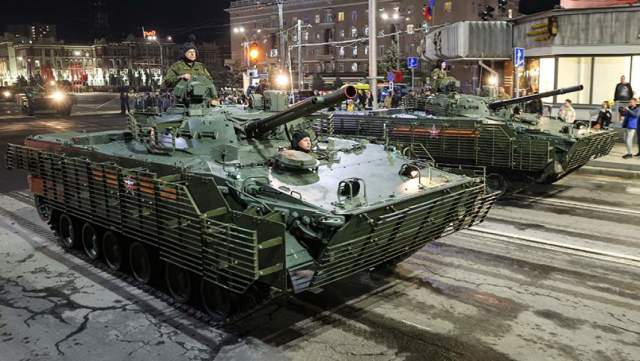 |
| BMP-3 infantry fighting vehicles. |
| Source: Photo: TASS/Eric Romanenko |
Peter Tyukov
Executive Director of PJSC Kurganmashzavod
A robotic BMP-3 with a Titmouse combat module was presented at the Army 2022 forum. The machine can perform combat missions without a crew, which was demonstrated during the dynamic demonstration — a remote-controlled BMP robot moved and fired.
Sergey Suvorov believes that the further direction of development of armored vehicles of this class will be to increase firepower, security, mobility, and command control. The expert assumes that the new IFVs will be equipped with electronic countermeasures for attack unmanned aerial vehicles, which have become a serious threat on the modern battlefield.
Victor Bodrov
The materials of S.V. Suvorov's book "Infantry fighting vehicles BMP-1, BMP-2 and BMP-3" were used
